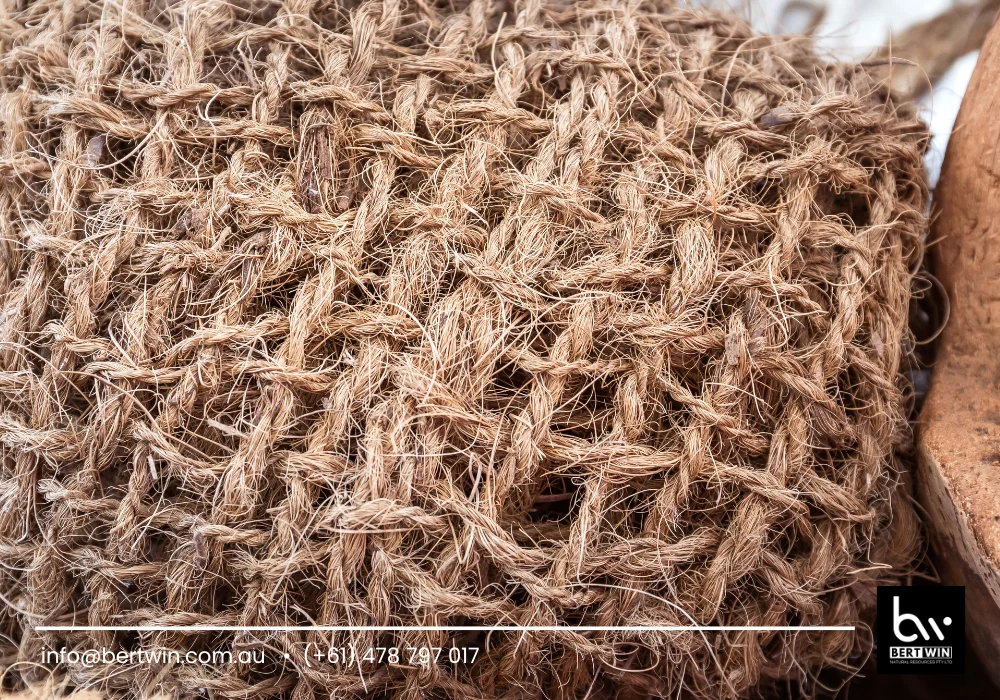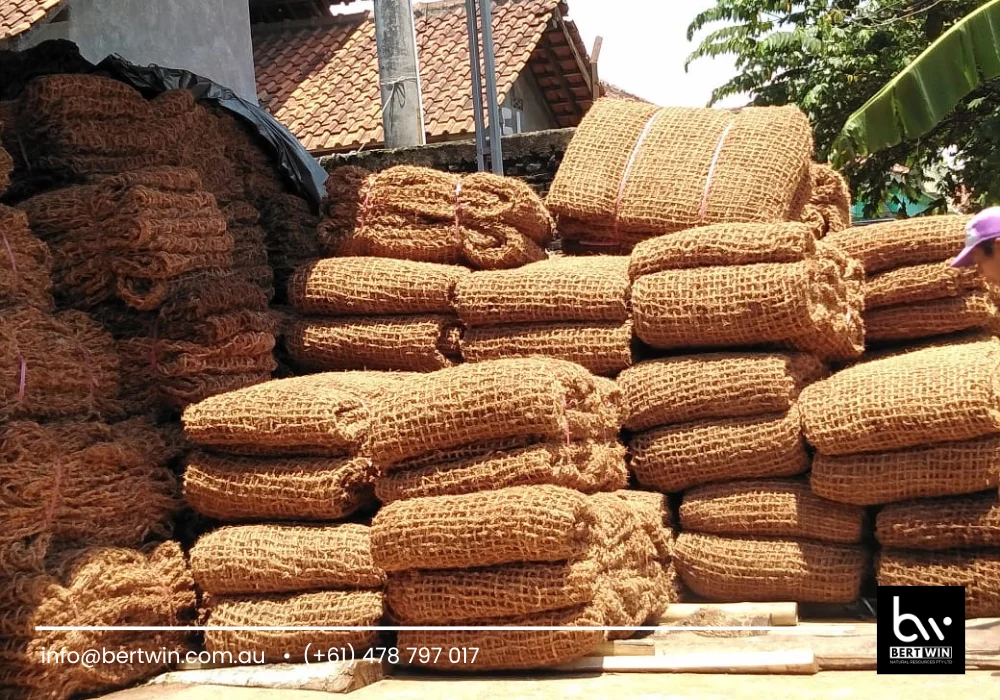Biodegradable coco mesh is gaining recognition as an effective and eco-friendly solution for soil stabilization, erosion control, and landscaping. Derived from the natural fibers of coconut husks, this mesh offers a sustainable alternative to synthetic netting commonly used in environmental and agricultural applications. In this article, we explore what coco mesh is, how it works, and why it is increasingly favored for both commercial and domestic use.

What Is Biodegradable Coco Mesh?
Biodegradable coco mesh is a woven netting made from coir, the coarse fiber extracted from the outer shell of coconuts. As the name suggests, it is biodegradable, meaning it naturally decomposes over time without harming the environment. Unlike synthetic erosion control products, which can linger for years and leave pollutants behind, biodegradable coco mesh enriches the soil as it breaks down, supporting plant growth and maintaining soil health.
This product is particularly popular in areas where maintaining ecological balance is crucial, such as riverbanks, hillsides, and construction sites prone to erosion.
Key Applications of Biodegradable Coco Mesh
Erosion Control and Land Rehabilitation
The most prominent use of biodegradable coco mesh is in erosion control. It is laid across vulnerable soil surfaces to prevent displacement caused by wind, water, or gravity. The mesh acts as a temporary barrier, holding soil in place while vegetation takes root. As plants grow, their roots naturally anchor the soil, eventually replacing the mesh’s function.
This makes coco mesh an excellent choice for reforestation projects, slope stabilization, and areas affected by mining or construction.
Landscaping and Gardening
In the landscaping sector, coco mesh serves both functional and decorative purposes. It can be used in garden beds, vertical gardens, or as a growing medium for climbing plants. The mesh structure promotes airflow and water retention while minimizing soil loss, making it ideal for sloped gardens and urban greening projects.
Its natural aesthetic also complements garden designs that emphasize sustainability and eco-consciousness.
Agriculture and Horticulture
Farmers and horticulturists use biodegradable coco mesh for mulching and protecting young crops from harsh environmental elements. It helps regulate soil temperature, retain moisture, and suppress weed growth without the need for chemical herbicides. Because the mesh decomposes naturally, there is no need to remove it after use—reducing labor and waste.
Advantages of Using Biodegradable Coco Mesh

Environmentally Friendly
One of the main benefits of biodegradable coco mesh is its low environmental impact. Produced from coconut waste, it is a byproduct of an existing agricultural process. Its biodegradability ensures that it won’t contribute to long-term pollution, making it an excellent choice for eco-friendly initiatives.
Supports Plant Growth
As the mesh gradually breaks down, it releases organic matter into the soil, improving its fertility. This not only benefits plant growth but also enhances the biodiversity of the area. The mesh also provides initial structural support to vegetation during the crucial early stages of development.
Cost-Effective and Labor Saving
Although the upfront cost of biodegradable coco mesh may be higher than some synthetic alternatives, its long-term benefits make it more cost-effective. There’s no need for removal or disposal, reducing labor and post-project maintenance expenses.
Versatile and Easy to Install
Biodegradable coco mesh is lightweight and easy to transport and install. It can be cut and shaped to fit any terrain, whether steep slopes, embankments, or flat surfaces. This versatility makes it suitable for a wide range of environments and projects.
Considerations When Using Biodegradable Coco Mesh
While biodegradable coco mesh offers many advantages, certain considerations should be taken into account. The decomposition rate depends on environmental factors like humidity, temperature, and microbial activity. In extremely wet climates, the mesh may degrade faster than expected, requiring reapplication in some cases.
It is also important to ensure proper anchoring during installation, especially on steep or windy sites, to prevent displacement before vegetation takes hold.
Future Outlook
With the growing demand for sustainable products and eco-conscious infrastructure, biodegradable coco mesh is set to play an increasingly important role in environmental protection and restoration. Innovations in coir fiber processing and mesh weaving techniques are making these products stronger and more durable while maintaining their biodegradability.
Governments, NGOs, and private companies are increasingly investing in green solutions like coco mesh to combat climate change, improve soil management, and promote biodiversity. As awareness of its benefits grows, biodegradable coco mesh is becoming a staple in responsible land and vegetation management.
Conclusion
Biodegradable coco mesh is a reliable, eco-friendly, and versatile tool for erosion control, landscaping, and agriculture. Its natural decomposition process enriches the soil while protecting it, offering both immediate and long-term environmental benefits. Whether you are managing a large reforestation project or beautifying your backyard garden, biodegradable coco mesh is a sustainable solution worth considering.
For further information, you may contact WhatsApp at (+61) 478797017 or via email at info@bertwin.com.au.
